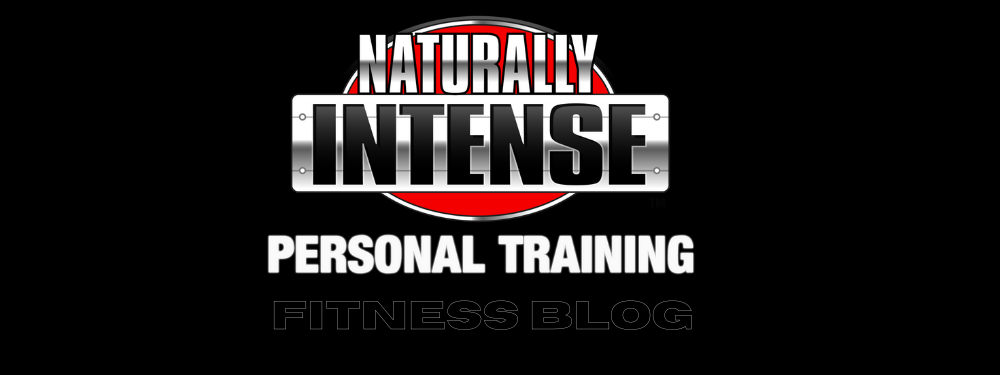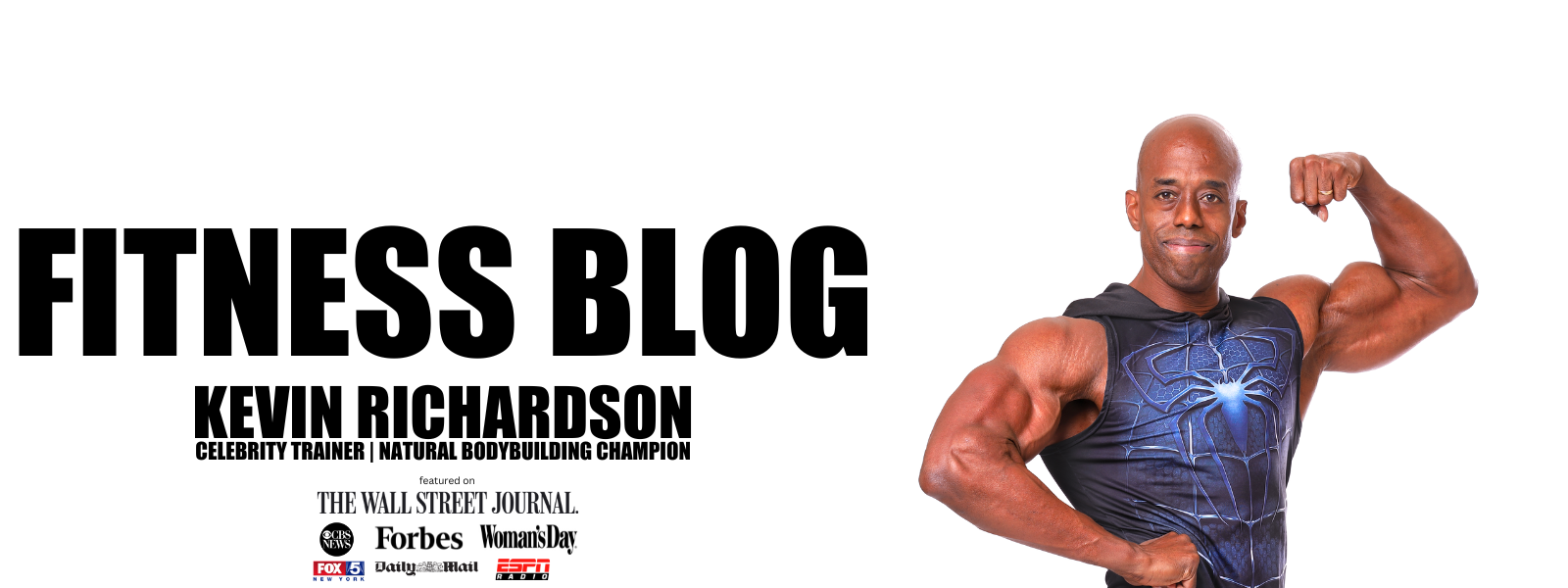Aerobic Exercise & Strength Training- Does It Help, Hurt Or Cause Overtraining?
One of the greatest obstacles to the realization of our fullest potential in any field is the idea of convention. Convention can heartily sustain the life force of myths and concepts poorly understood by the public at large, even when confronted by volumes of well researched science that contradicts them. Nowhere is the hold of convention more pronounced than in the related fields of diet and exercise, where training protocols are often prescribed or implemented based on what is popular or what everyone has traditionally done. Not much thought is given to whether the programs are necessarily the best practices for the goals sought. The universal recommendation that aerobic exercise needs to be a part of everyone’s strength training training regime is a case in point, as volumes of research highlight the negative impact of aerobic exercise on strength training, power development and muscle development. Not that there’s anything wrong with aerobic and distance training, as it does indeed serve several purposes. Its health benefits are many and well documented. However, most employ aerobic exercise as a way of reducing body fat, building endurance or improving recovery time. All these benefits can be better achieved through other more anaerobic based and time efficient forms of conditioning such as high intensity training [1,2,3,4] and attention to dietary intake. More importantly numerous studies have shown that concurrent aerobic exercise can in many cases negatively impact strength and power gains as well as increase the likelihood of overtraining and bring about negative hormonal responses to exercise even when used in relatively small amounts. [1, 5,6,7,8] Such findings disqualify aerobics as a universal requirement for everyone, especially those interested in optimizing strength, power and or muscle mass to their fullest potential. A group that includes not only athletes whose disciplines require maximum strength and power output but also those seeking the toned, tight and sculpted body and those wishing to increase strength and skeletal muscle as a means of decreasing the motor related decline that comes with aging. [9] Thanks for reading my work and do be sure to share it with anyone who you think might find it to be of interest- Kevin Richardson, Personal Trainer New York City
The Impact of Aerobic Exercise on Adaptations For Power & Strength
The human body is a very specific machine, one that is individually adapted to the very stresses that it encounters throughout the course of everyday life. The process of increasing strength and muscle mass is in fact a stress response adaptation to a very specific form of overload. When lifting weights, for example, at a level of intensity or with a load sufficient enough to trigger a need for our body to adapt, a number of hormonal, neuromuscular and chemical events occur. Events that lead to an adaptive anabolic environment that can promote increases in muscle size and or increased ability to generate force. (See my Article on How Muscles Get Bigger & Stronger) By engaging in sustained steady state aerobic exercise such as distance running, our body is exposed to a very different form of stress-and the adaptations for this form of activity are far different than those required for increased power, strength and muscle mass. The physique of a sprinter is far different from that of a marathon runner as the two activities create different physical adaptations thus it should come as no surprise that many studies confirm that continued aerobic exercise can bring about decreases in muscle power. This may be due to neuromuscular and hormonal adaptations favorable for reducing the amount of energy expended while exercising- factors which would make an endurance athlete more efficient as opposed to maximizing mechanical power.[1] The sheer volume requirement of endurance type training as well may be a consideration as well as it appears to interfere with the recovery required for maximal results from strength and power training.[7]
The Impact Of Aerobic Training On Power and Rate Of Force Development
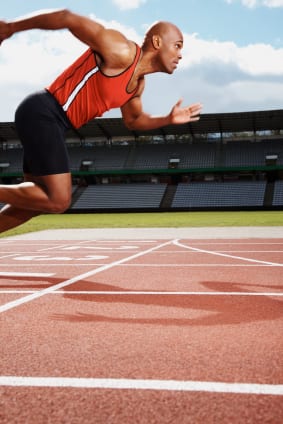
Repetitive activity associated with aerobic exercise has been shown to reduce the ability to generate force in the high velocity, low frequency region of the force velocity curve- in other words it makes our muscles less powerful.[1,5] Power and strength are closely related but not exactly the same thing. Strength is defined as the capacity for gross muscular effort. Power on the other hand refers to the speed at which effort can be performed. Its development is paramount for athletic performance since most movements in any sporting discipline are executed as forcefully and as quickly as possible.[1] Even in sports that one might consider primarily aerobic in nature such as basketball or soccer due their extended duration of play actually consist of repeated bouts of explosive movements that make up a very small proportion of playing time. [9,10] A good example of differences between power and strength would be a comparison between a powerlifter bench pressing 440lbs and an Olympic level 100m sprinter exploding out of the blocks. Both movements require the ability to generate larger forces at high speeds, but the sprinter’s acceleration would be almost twice as powerful as the powerlifter. Contrast that with the amount of high speed force required by a baseball player to swing a bat from maximal backswing to contact with the ball where the baseball player generates just under ten times more force than the powerlifter bench pressing 440lbs. The baseball player would not likely be able to lift as much as the powerlifter, but he or she might be more powerful. That being said, you can be strong and not powerful but you can’t be powerful without a certain base of strength as the two are very directly related. (The most powerful athletes, Olympic lifters are indeed the strongest.) Now we have an understanding of the significance of strength and power, we can look at how it can be affected by distance type training.
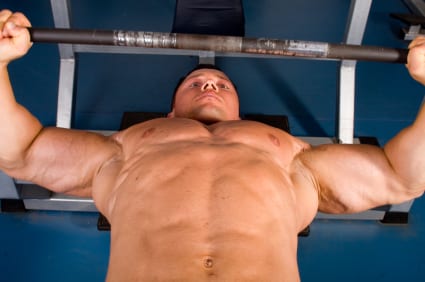
A study published in the European Journal of Applied Physiology took an in-depth look at how power is affected when individuals do strength training concurrently with endurance training as opposed to strength training on its own. During the three week study, two groups of male participants were made to train twice a week doing the same program of resistance exercise with one group doing an additional two days of continuous aerobic exercise on a rowing machine with sessions lasting anywhere from 30 to 60 minutes in duration. At the end of the study there were similar increases in maximum one repetition lifts and isometric strength tests, but only the strength training group saw an increase in rate of force development (ROFD) and the associated rapid neural activation. No changes whatsoever were observed in the group doing both strength training and aerobic exercise.[12] Rate of force development refers to the speed at which force can be produced and a faster ROFD means you are able to do quicker and more explosive movements- qualities essential for strength increases as well as athletic performance. The study concluded that even small amounts of aerobic exercise can lead to interference in explosive strength development.[1]
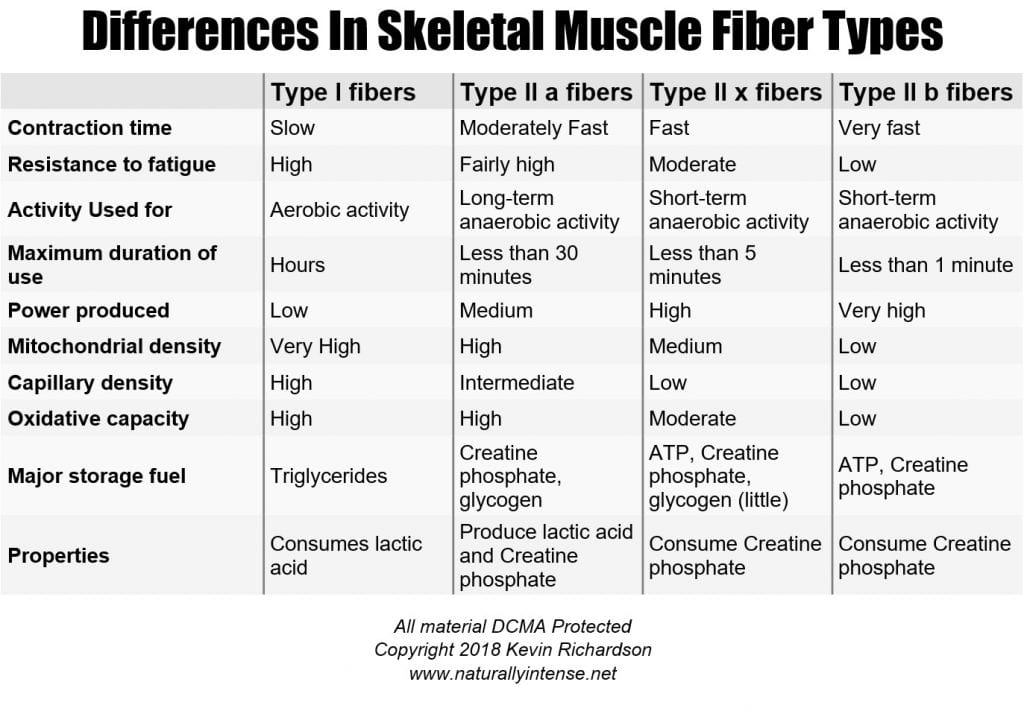
How Aerobic Exercise Affects Muscle Development for Maximum Power & Muscle Mass
Other studies have demonstrate that sustained aerobic type exercise not only affects rate of force development, but also decreases peak power development through changes in the way muscles are recruited. There are basically two types of skeletal muscle fibers in our bodies Type I and Type II. (See the chart above for a detailed breakdown of the differences.) Type I fibers are what you would recruit primarily if you were running or doing any form of sustained aerobic activity for a considerable amount of time (usually longer than 30 minutes) and someone like a successful marathon runner would tend to have a fairly high distribution of them as an adaption to the sustained endurance training they undergo. Such fibers are highly resistant to fatigue, have a dense network amount of capillaries transporting oxygen rich blood to them and use triglycerides (fats) as their primary fuel source. (Thus the origin of the idea that aerobic activity is best for burning body fat- which it is not- See my article on Rethinking the Need for Aerobics) Not to get too technical but Type I fibers gain their resistance to fatigue from their ability to generate ATP (an important muscle fuel source) through the use of oxygen (aerobic metabolism) which is provided by the many blood vessels found in such muscle fibers.
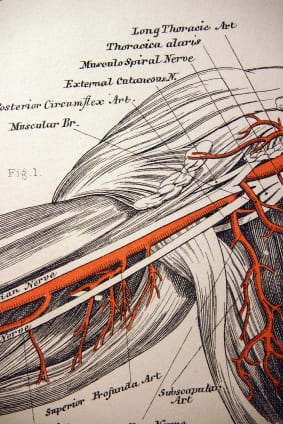 Type II fibers are more efficient for short bursts of speed and power. These muscle fibers are not recruited to a significant extent during low intensity exercises such as endurance training.(13) Type II fibers have various sub divisions and use glycogen (and creatine phosphate) as their main fuel source and can use either anaerobic or aerobic oxidative metabolism to generate ATP. Type IIx and type IIb fibers are used primarily for explosive movement or any short term anaerobic activity. Generally, these muscle fibers are found in high distributions on more muscular athletes like bodybuilders, powerlifters and sprinters as an adaptation to the short high intensity training protocols that they regularly engage in. These fibers also produce more power than all the other fibers and rely on an anaerobic (without oxygen) metabolism to create ATP. Their development is an important part of any program where strength and power production is a primary goal, and is an important part of any regiment geared towards building lean muscle mass as other muscle fibers do not develop to the extent of these fibers. Type IIa fibers are a bit of a cross between Type II and Type I fibers as they have a fairly high resistance to fatigue and use both anaerobic and aerobic metabolism to operate. They act as a sort of a bridge between long term and short term activity and allow us to perform movements of moderate intensity for periods up to about 30 minutes.
Type II fibers are more efficient for short bursts of speed and power. These muscle fibers are not recruited to a significant extent during low intensity exercises such as endurance training.(13) Type II fibers have various sub divisions and use glycogen (and creatine phosphate) as their main fuel source and can use either anaerobic or aerobic oxidative metabolism to generate ATP. Type IIx and type IIb fibers are used primarily for explosive movement or any short term anaerobic activity. Generally, these muscle fibers are found in high distributions on more muscular athletes like bodybuilders, powerlifters and sprinters as an adaptation to the short high intensity training protocols that they regularly engage in. These fibers also produce more power than all the other fibers and rely on an anaerobic (without oxygen) metabolism to create ATP. Their development is an important part of any program where strength and power production is a primary goal, and is an important part of any regiment geared towards building lean muscle mass as other muscle fibers do not develop to the extent of these fibers. Type IIa fibers are a bit of a cross between Type II and Type I fibers as they have a fairly high resistance to fatigue and use both anaerobic and aerobic metabolism to operate. They act as a sort of a bridge between long term and short term activity and allow us to perform movements of moderate intensity for periods up to about 30 minutes.
How are muscle fibers affected by aerobic exercise? A decade long Canadian study found that subjects who regularly engaged in high intensity aerobic training verified the idea that our bodies do indeed adapt to the specific stresses it has to regularly undergo. The percentage of Type I fibers in those who regularly participated in distance training was 70.9% as opposed to 37.7 percent in the control group who did not exercise. Endurance training appeared to promote a transition from Type II to Type I fibers at the expense of the more powerful Type II fibers. Interestingly enough, Type IIa fibers in the endurance trained group members actually had a reduced aerobic capacity as a result of the years of training.[14] This decrease in percentage of fast twitch fibers significantly compromises strength and speed capabilities as high intensity conditioning requires an increase in the functional properties of fast twitch Type II fibers relative to slow twitch Type I fibers. Although in a large part individual proportions of muscle fiber types are genetically predetermined, what we do can make a large difference in how our body adapts. The more aerobic exercise you do, the greater promotion of Type I fiber -while the more explosive type anaerobic training you do can increase the proportions of Type II fibers.[15,16,17]
Effects Of Concurrent Aerobic Exercise & Strength Training On Cortisol & Testosterone Levels
Another area for concern is the impact of concurrent aerobic training with strength training on your hormone levels. Some studies have found that aerobics done in certain quantities can produce a net catabolic (breaking down) effect on muscle tissue.[1] This catabolic effect can be traced to either a decreased release of testosterone or an increase in the stress hormone cortisol from combining the two forms of training.[7] A study of US Army soldiers published in the Journal of Applied Physiology took 35 men and split them into four groups. The first group performed whole body high intensity strength training for four days a week focused on increasing muscle size and strength. The second group did upper body strength training only and the third group performed aerobic type endurance training only. A program consisting of two days of continuous aerobic exercise at 80-85% VO2max for 40 minutes and two days of interval training at 95-100% VO2max. The fourth group did a combination of both strength training and aerobic training protocols. Researchers found a significant increase in exercise induced and total cortisol response after in members of the strength & aerobics training group. Whereas those in the strength training only group saw a decrease in cortisol levels and an increase in testosterone levels. Changes that promote an anabolic environment favorable to increased muscle growth and strength increase. The study concluded that the catabolic effects noticed in the strength and aerobic trained group came as result of extreme stress placed on the adrenal glands which systematically lead to a form of overtraining.[7] Other studies of concurrent strength and aerobic type endurance training found similar increases in cortisol (a catabolic stress hormone) among those training in both modalities.[5,18]
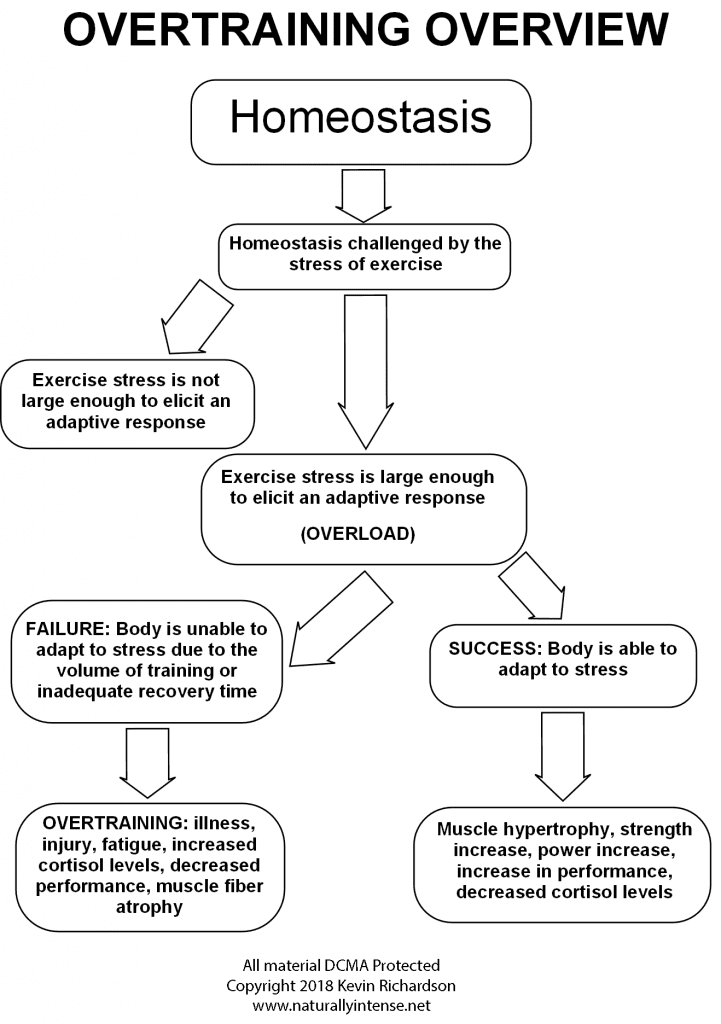
The Role of Aerobics In Promoting Overtraining When Combined With Strength Training
Our muscles get stronger, bigger and more powerful as a direct response to the stress of exercise. However, it must be noted that these changes can only occur if the volume and or intensity of training is not so much that our bodies are unable to adapt to it. When we are unable to recover from exercise induced stress, we are said to be overtrained- and overtraining can bring about a long term decrease in performance and muscle related improvements. Recovery from overtraining can take several days to several weeks [19] and we know now that sustained aerobic exercise combined with strength training may result in less than optimal hormonal profiles and other factors associated with overtraining. (5,7,19)
The human body has a limited set of resources available to it to help recover from the stress of exercise. An insufficient recovery is the central causative factor of overtraining. That being said, given the large volume of exercise that accompanies conventional endurance based aerobic training, the amount of repetitive stress placed on joints during such forms of continuous exercise and the large amount of energy substrates consumed, it is not surprising that the stage is set for overtraining when it is combined with the rigors of high intensity anaerobic training.[1] The increase in oxidative stress during continued aerobic type training may also have a negative impact on net protein turnover. This impact can result in muscle fiber atrophy [20]. All of the aforementioned factors create an environment that prevents optimal adaptation to strength and power training.(1)
Inadequate recovery can also lead to a lasting fatigue that diminishes the ability to develop tension during power and strength movements. Reduction in power generation from overly high training volume then reduces your ability to learn and master power related skills [21,22,23] while also increasing your risk for injury. The common scenario for people starting an exercise program that includes both weight training and aerobics is that they tend to quit several weeks into the program after an enthusiastic start. Considering the amount of stress inflicted on the body by combining both modes of training it is no surprise that an otherwise untrained individual would experience fatigue and a psychological aversion to training over time. It wouldn’t be because of a lack of willpower or consistency but simply because they are overtrained.
Alternatives to AerobicExercise for Endurance Development
Aerobic fitness is indeed an important component for both health and athletic performance. However, prolonged aerobic exercise isn’t the only way to increase endurance and cardiovascular capacity nor is it the most efficient. High intensity training and high intensity interval training has been shown to produce metabolic endurance adaptations similar to and in some cases superior to aerobic exercise.[24, 25, 26] (Read my article here on high intensitytraining and endurance) Other studies found that similar increases in maximal aerobic capacity (VO2max) and improvements in 1 mile run times can occur not just as a result of high volume continuous endurance training but also from high intensity interval training as well. Interval training however takes less time to complete. It has the added benefits of improving anaerobic capacity and power output whereas conventional endurance training only positively affects the aerobic energy system. [25]
The Main Source Of Contention- Inclusion Of Aerobics For Body Fat Reduction
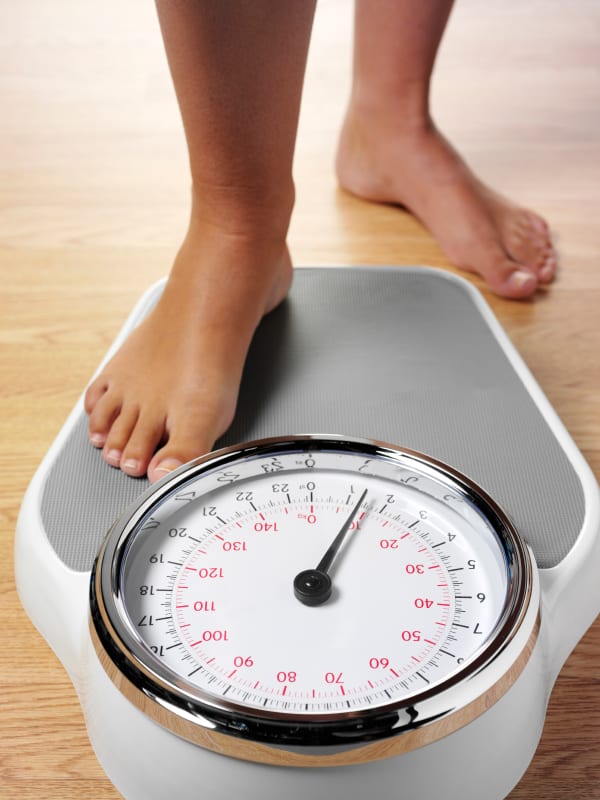
Perhaps the most common reason for employing aerobic exercise with strength training is for purposes of reducing body fat. Conventional thinking has long been that aerobics burn significant amounts of calories- enough to create a negative energy deficit that would bring about a reduction in body fat. For this reason, most employ aerobics into their training regime as a way to keep their body weight under control. Considering that aerobic exercise does indeed use fats as an energy source it is easy to see some logic to that approach. However, when compared to high intensity anaerobic training modalities, the idea of aerobics as the best way to lose body fat comes into question. Studies confirm that high intensity training methods create greater post exercise energy expenditure and fat utilization [27,28,29,30] and favor negative energy and lipid balance to a greater extent than low to moderate intensity aerobic type exercise.[1] That being said you don’t need aerobics to burn fat if the intensity of your anaerobic training is sufficient and if you maintain a sensible diet. (See my article on High IntensityTraining & Weight Loss Here)
Are there benefits to aerobics? Absolutely. By no means should this article be construed as a negative hit against such forms of exercise. For many aerobics exercise offers not only numerous health and performance benefits but psychological ones as well. It can be an excellent tool for relieving symptoms of depression and elevating mood. Many people run or do aerobics not so much for a physical effect but for the high that comes with exercise. High intensitytraining has been shown to elicit similar psychological advantages as well in elevating mood and combating depression [27] but it would be unrealistic to expect everyone to gravitate towards that form of training. Thus, if your goals revolve around maximizing strength and power for athletic performance, the science of the matter would suggest that adding aerobics to a program of weight training could be counterproductive. Those seeking the toned and taut look that comes from building quality lean muscle mass while minimizing body fat levels should also note that aerobics isn’t the only way to shed body fat and that they might be better served avoiding it altogether and instead focus on high intensity training protocols and proper diet to reduce body fat and increase aerobic fitness levels. On the other hand, runners and endurance athletes as a whole would benefit greatly by adding strength training to their exercise programs as it may help maintain normal levels of testosterone. [5]
While some studies have found seemingly contradictory findings regarding concurrent strength and aerobics training, these differences appear mainly to be due to differences in protocols, exercises used, length of the studies and the age and fitness levels of the participants selected. Studies using high intensity strength training as a control however seem to confirm the effects of overtraining as a result of performing both training modalities concurrently as well as a decrease in power generation and strength friendly muscle fiber development. Also of importance is the increased cortisol production observed in those studies of concurrent aerobic and strength training protocols. In two decades of experience as a trainer, I have consistently seen significant increases in muscle mass, strength and power generation in endurance athletes I have worked with when they cease endurance training altogether in the offseason or as a result of injury. However, these increases occurred without any subsequent loss of aerobic fitness capacity when they eventually resumed distance based training. In the end, it is up to you to determine what your goals are and ensure that the program you use helps you attain those goals as opposed to being locked into the idea that aerobic exercise is a universal requirement for everyone.
High Intensity Bodyweight Training: Ballistic Pushups & Dips!
This was a tough one!
Starts out with ballistic push ups (like clap pushups but without the clap as my wrist is still not 100%) nonstop for 20 reps, then all out on dips for 10 reps.
To say it was painful would be an understatement, but you just have to push through and keep on going.
Still training, hope you are too and as always, Excelsior!!! #naturallyintense
#hometraining #homeworkout #homeworkout #highintensitytraining #naturalbodybuilder #naturalbodybuilding #fitover40 #naturalbodybuildingvideos #chestday #chesttraining #naturalbodybuildingtips #pushups #dips #bodyweighttraining #highintensitytrainingtips #drugfreebodybuilding #calesthenics
Kevin's Unconventional Biceps Training- 3-6 Minutes a Week!
In this video I go over my biceps training using the Naturally Intense High Intensity Training protocols that helped me go from having arms measuring 11.5 to 12 inches to 18 inches drug free!
It's an unconventional approach for certain, but it's one that's helped my arms grow and the hundreds of men and women I have trained over the past 30 plus years.
Now, my success isn't due to being genetically gifted, as it took me the better part of 11 years to get my arms up to those measurements.
Which is significant as it works and been been proven time and time again to work for the average man or woman trying to grow their arms without drugs.
It's my hope that these high intensity training protocols can help you as much as they helped me!
Click on my bio link to see the full video on my YouTube channel and thanks as always for taking the time to look at my work!!! Excelsior!!! #naturallyintense
#highintensitytraining #naturalbodybuilder #naturalbodybuilding #fitover40 #naturalbodybuildingvideos #armworkout #bicepsworkout #naturalbodybuildingtips #biceps #armtraining #highintensitytrainingtips #drugfreebodybuilding #barbellcurls
At the Lancaster Classic Day 2 Elimination Rounds Against European Champion, and World Record Holder Leo Pettersen @leo_barebow_archer
I don't talk much about it but I'm also a competitive barebow archer (surprise!) and last Saturday I had the honor of making it to Day 2 at the Lancaster Archery Classic in the Barebow Division, as I made the top 64 out of 267 competitors and had a chance to shoot with some of the greatest barebow shooters on the planet!
I didn't make it past Leo, but it was a real rush to be there and a huge thanks to my coach, Joe MyGlyn @prolinearchery for helping me get there.
Thanks as well to my good friend @sean_chan33 for all of his help from the very start, to my line buddy Aaron Shea for taking the shot and showing up to support!
My thanks as well to rob_kaufhold for putting on and promoting one of the best archery tournaments on earth!
Thanks also to to everyone who took the time to send a supporting word and I am looking forward to next year!!! #naturallyintense #barebow
#lancasterclassic #lancasterarcheryclassic2024 #lancasterarchery #archery #fitover40 #barebowrecurve #targetarchery
Dumbo, Brooklyn circa 2004
This shot was taken as part of the promotion for my Naturally Intense DVD and was about a year after my last bodybuilding competition.
It was a grueling photoshoot.
We started at about 10 am and finished around 4pm and I was completely spent, but the more we shot the sharper I looked, so we kept on going.
It's nice to look back from time to time and as tired as I was, we all had a blast!
My thanks to @stephanie_corne_artwork, @https://pulse.ly/itgnag2dec and @ftaz1 for taking the shots!!!
Thanks for watching and as always, Excelsior!!! #naturallyintense
#naturalbodybuilder #naturalbodybuilding #throwback #fifthavenuegym #5thavenuegym #drugfreebodybuilding #naturalbodybuildinglifestyle #gymlife #gymmotivation #naturalbodybuildingmotivation #bodybuilding #blackandwhite #instablackandwhite #bnw
Can You Build An Impressive Physique Training Only At Home?
Absolutely!
I stopped training in commercial gyms as of March 2020 and have been training at home ever since.
Initially I was admittedly worried that I might lose some of my gains or not make as much progress, but that certainly wasn't the case.
I've consistently continued to improve with my high intensity workouts and muscles have no idea where they are training.
As long as the criteria of adequate intensity and overload are met, there will be an adaptive response and your muscles will get bigger and stronger.
So don't worry at all about where you train, focus instead of what will be the best way for you to always be training!
Thanks for watching and as always, Excelsior!!! #naturallyintense
Kevin's Three Day Training Spilt!
For the past 33 years I have trained three times a week with Naturally Intense High Intensity Training workouts lasting 10, 15 to 20 minutes max.
It's a training split tried and testes not only in it's helping me realize my goal of becoming a successful natural bodybuilder, but it's also helped hundreds of men and women over the past three decades.
I have tested just about every possible training split imaginable and for this particular style of high intensity training, this particular grouping consistently yields fantastic results.
I hope it helps you as much as it's helped me over the years and thanks so much for taking the time to look at my work.
Keep training hard and Excelsior!!! #naturallyintense
Excelsior!!! #naturallyintense
#trainingsplit #3daytrainingsplit #threedaytrainingsplit #naturalbodybuilding #naturalbodybuilder #naturalbodybuildingvideo #naturalbodybuildingmotivation #naturalbodybuildingtips #drugfreebodybuilding #bodybuilding #highintensitytraining #highintensitytrainingtips
405 Stiff Leg Deadlift for 7 Reps! High Intensity Training.
First leg workout of the year and already pushing it!
I haven't done a stiff leg deadlift over 315lbs for about 3 years at this point, and I did my last set with 315lbs and comfortably got to 10 reps and decided I had far too much gas left in the tank and that I should go up in weight.
So I did.
I figured I might get a solid 6 reps in, but I made it to 7 and I think I could have gone on to get a full 10 reps BUT that's when good judgement prevailed.
As a bodybuilder having not trained this heavy for so many years, the shock of this much weight would be more than enough to stimulate muscle growth, and doing more reps wouldn't yield any greater returns, only increase the likelihood of injury.
It's not about the numbers, it's about training to a point where you achieve your goal, and it's important to have a goal in mind as a bodybuilder based on increasing muscle mass rather than hitting a particular number.
Besides, if in my 20's I never did more than 405lbs on a stiff leg deadlift, it doesn't make any sense going heavier than when I am almost 50!
Could I deadlift more at this point?
Absolutely but just because you can doesn't mean you should!
So keep those weights in a good working range, keep it safe and as always Excelsior!!! #naturallyintense
#hometraining #homeworkout #homeworkout #roguerack #highintensitytraining #naturalbodybuilder #naturalbodybuilding #fitover40 #naturalbodybuildingvideos #backworkout #naturalbodybuildingtips #backtraining #highintensitytrainingtips #drugfreebodybuilding #fitoverforty #deadlift
Turning 50 in a few months...
Not much of a big deal for me as I still feel pretty much the same but I hope that my example helps show what can be done with a lifetime commitment to eating well and training consistently!
Thanks for coming along on the journey and as always, Excelsior!!! #naturallyintense
#naturalbodybuilder #naturalbodybuilding #healthylifestyle #fitover40 #drugfreebodybuilding #naturalbodybuildingmotivation #natty #fitness
Please note that all material is copyrighted and DMCA Protected and can be reprinted only with the expressed authorization of the author.
Featured everywhere from the Wall Street Journal to CBS News, Kevin Richardson’s Naturally Intense High Intensity Training have helped hundreds lose weight and transform their bodies with his 10 Minute Workouts. Founder of NaturallyIntense High Intensity Personal Training. 5 time winner Best Personal Trainer NYC Award Winner.
Related Articles:
What Happens When You Stop Training– Muscle Size & Strength
Rethinking The Need For Cardio
Full Range Of Motion Vs Partial Reps
References for Aerobic Exercise & Strength Training:
1. Marcus EC, Wagner PP, Chiu L. Power Athletes and Distance Training– Physiological and Biomechanical Rationale for Change. Sports Med 2007
2 Chen ZP, Stephens TJ, Murphy S et al. Effect of Exercise on skeletal muscle AMPK signaling in humans. Diabetes 2003
3 Tremblay A, Simoncau JA, Bouchard C. Impact of exercise intensity on energy expenditure, lipid oxidation and body fatness. Int J Obes Relat Metab Disord 2001
4. Chilibeck PD, Bell GJ, Farrar RP, et al. Higher mitochondrial fatty acid oxidation following intermittent versus continuous endurance exercise training. Can J Physiol Pharmacol 1998
5 Bell GJ, Syrtuik D, Martin TP et al. Effect of concurrent strength and endurance training on skeletal muscle properties and hormone concentrations in humans. Eur J Appl Physiol 2000
6. Hennessy LC, Watson AWS. The interference effects of training for strength and endurance simultaneously. J Strength Cond Res 1994
7. Kraemer WJ, Patton JF, Gordon SE, et al. Compatibility of high intensity training and endurance training on hormonal and skeletal muscle adaptations. J Appl Physiol 1995
8. Dudley GA, Djamil R. Incompatibility of endurance and strength training modes of exercise. J Appl Physiol 1985
9. Taylor J. Basketball: applying time motion data to conditioning. Strength Cond J 2003
10. Wisloff U, Helgerud J, Hoff J. Strength and endurance of elite soccer players. Med Sci Sports Exerc 1998
11. Beham DG, Sale DG. Intended rather than actual movement velocity determines velocity specific training response. J Appl Physiol
12. Hakkinen K, Alen M, Kramer WJ , et al. Neuromuscular adaptations during concurrent strength and endurance training versus strength training. Eur J Appl Physiol 2003
13. Casey A, Constantin-Teodousiu D, Howell Se, et al. Metabolic response of type I and II muscle fibers during repeated bouts of maximal exercise in humans. Am J Physiol 1996
14. Thayer R, Collins J, Noble EG, et al. A decade of aerobic endurance training: histological evidence for fiber type transformation. J Sports Med Phys Fitness 1994
15. Dawson B, Fitzsimons M, Green S, et al, Changes in performance, muscle metabolites, enzymes and fiber types after short sprint training. Euro J Appl Physiol 1998
16. Jacobs I, Esbjornsson M, Sylven C, et al. Sprint training effects on muscle myoglobin, enzymes, fiber types, and blood lactate. Med Sci Sports Exerc 1987
17. Jansson E, Esbjornsson M, Holm I, et al. Increase in the proportion of fast-twitch muscle fibers by sprint training in males. Acta Physiol Scand 1990
18. Bell GJ, Syrotuik D, Socha T, Maclean I, et al. Effect of strengthtraining and concurrent strength and endurance training on strength, testosterone, and cortisol. J Strength Cond Res 1997
19. Kuipers H, Keizer HA. Overtraining in elite athletes: review and directions for the future. Sports Med 1988
20. Smith LL. Tissue trauma: the underlying cause of overtraining syndrome? J Strength Cond Res 2004
21. Anshel MH, Novak J. Effects of different intensities of fatigue in performing a sport skill requiring explosive muscular effort: a test of the specificity of practice principle. Percept Mot Skills 1989
22. Arnett MG, DeLuccia D, Gilmartin K. Male and female differences and the specificity of fatigue on skill acquisition and transfer performance. Res Q Exerc Sport 2000
23. Williams LR, Daniel-Smith JH, Gunson LK. Specificity of training for motor skill under physical fatigue. Med Sci Sports 1976
24. Dolgener FA,Brooks WB. The effects of interval and continuous training on VO2max and performance in the mile run. J sports Med Phys Fitness 1978
25. Tabata I, Nishimura K, Kouzaki, M, Hirai Y, Ogita F, Miyachi M, Yamamoto K Effects of moderate-intensity endurance and high-intensity intermittent training on anaerobic capacity and VO2max. Med Sci Sports Exerc. 1996
26. Burgomaster KA, Howarth KR, Phillips SM, Rakobowchuk M, MacDonald MJ, McGee SL, Gibala M. Similar metabolic adaptations during exercise after low volume sprint interval and traditional endurance training in humans. J App Physiol, 2008
27. Singh NA, Stavrinos TM, Scarbeck Y, Galambos G, Liber C, Singh MA. A randomized controlled trial of high versus low intensity weight training versus general practitioner care for clinical depression in older adults. Journal of Gerontology: Medical Sciences 2005
28. Bahr R (1992). “Excess postexercise oxygen consumption–magnitude, mechanisms and practical implications”. Acta Physiologica Scandinavica. Supplementum 1992
29. Bahr R, Høstmark AT, Newsholme EA, Grønnerød O, Sejersted OM (September 1991). “Effect of exercise on recovery changes in plasma levels of FFA, glycerol, glucose and catecholamines”. Acta Physiologica Scandinavica 1991
30. Bielinski R, Schutz Y, Jéquier E. “Energy metabolism during the postexercise recovery in man”. The American Journal of Clinical Nutrition 1985
